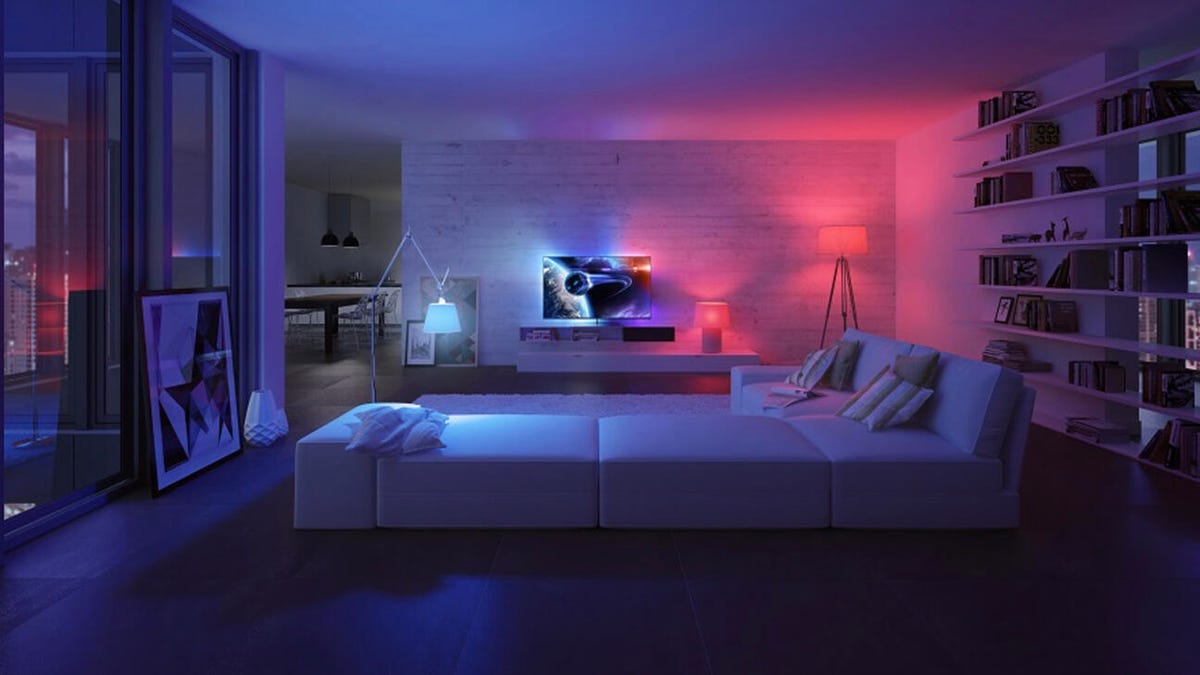
Tech Specs:
- Usage: Indoor, outdoor
- Wattage: 10 watts, equivalent to 75W
- Connectivity: Bluetooth & 2.4GHz WiFi
- Color range: 16 million colors
- White temperature: 2700K-6500K, 50,000 shades of natural white light
The Philips Hue began as an Apple HomeKit exclusive back in 2012, available for sale at Apple Stores nationwide as part of a starter kit that contained three bulbs and a hub and retailed for $199. Additional bulbs cost $59. As the very first fully customizable and wireless-controlled line of lights, the Philips Hue was absolutely groundbreaking.
Though many other brands have launched smart lights since 2012, Philips Hue continues to rule the roost as the go-to when people look for a smart light bulb.
One drawback is, however, that you will need a Philips Hue Hub to enjoy most of the smart perks and automations you’d expect from a smart light. The Hub is compatible with IFTTT, Alexa, HomeKit, SmartThings, and Google Assistant, just to name a few, and available for sale for $54. Just one hub can handle up to 50 Philips Hue light bulbs throughout your home. So if you’re looking to gradually swap out your dumb lights for Philips Hue ones, it’s not a bad idea to get the hub.
You can still control the Philips Hue light bulbs without the hub, using your smartphone or Echo device, for example, by employing Bluetooth technology, though there are limitations within the Hue app. You can still enjoy up to 16 million different colors as well as dimming capabilities to instantly change the mood in the room with just a tap of your phone.
Pros
- Reliability: Philips Hue is the top brand in smart lights
- High compatibility when using a hub
Cons
- Need a hub to use most smart capabilities
- Most expensive




















